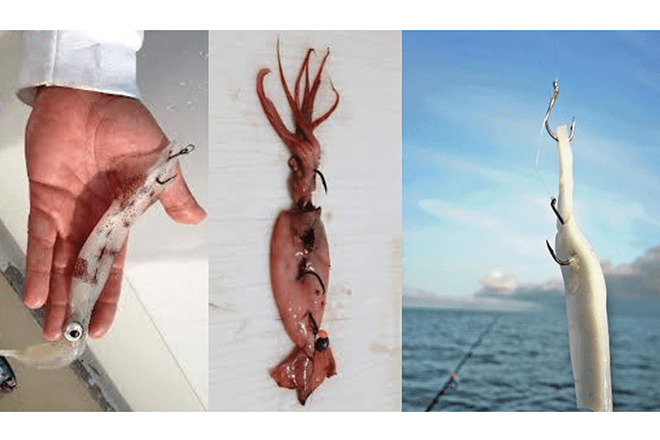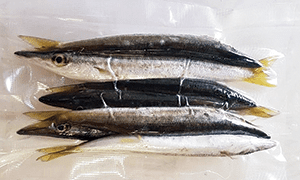
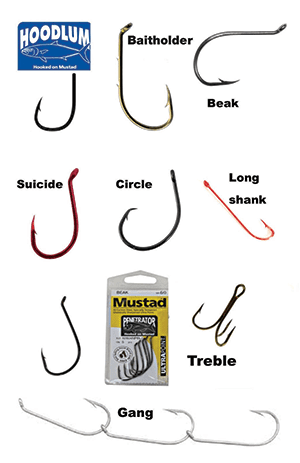
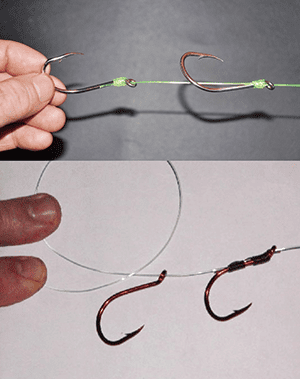
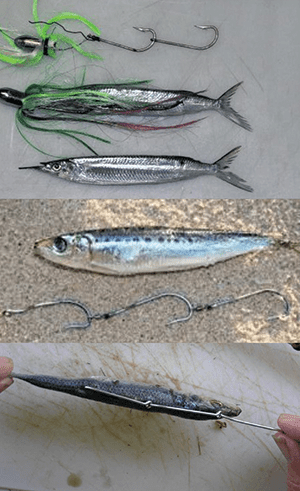
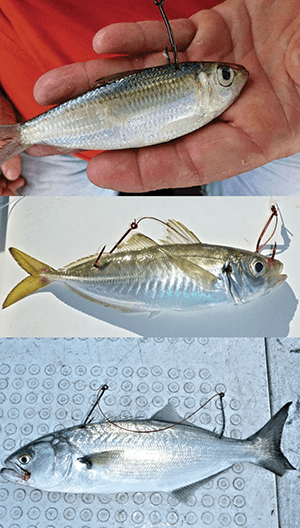
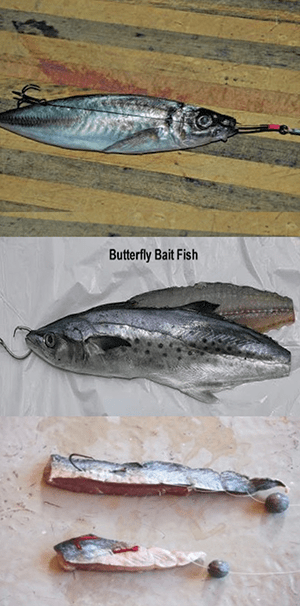
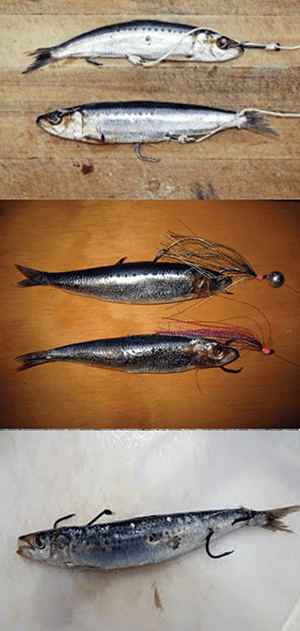
SNAPPER are one of those fish that anyone who has picked up a fishing rod dreams about catching.
However, you will be lucky if you catch a prize fish on your first trip into Moreton Bay as snapper are very smart and fussy feeders, especially the big ones.
Mono or braid?
While a well-balanced rod and reel spooled with either braid or mono is important to catch a good snapper, it’s what’s at the end of the rig that is the most vital. Following are some of the bait rigs and baits I have had success with.
Snapper are such hard and strong fighters that you really need to have tough terminal rigs to even be in with a chance. Whether you spool your reel with braid or mono to a degree depends upon what depths you are fishing. I have found that when I am fishing in water of 40m or more, braid is the best choice because it doesn’t bow as much when the bait heads for the bottom.
Braid is good here too because it is very responsive and you feel every bump and hit when fishing such depths. I use 50lb braid when fishing in deep water. When in shallow water of 20m or less, mono stretches, which is useful when that big fish takes off and you strike at it.
When fishing shallow water with braid, I found that as the fish ran and I struck, it ripped the hook out of the fish’s mouth because braid has no stretch. To compensate, I used a very long fluorocarbon leader to absorb the shock during a strike. I seldom use swivels as all you’re doing is adding an extra breaking point in your rig that can give way, but if I do I generally use Black Magic ones.
For tying main line to leader I use an albright knot because it is one of the easiest to tie when rocking around in a boat. The main thing to remember is to wet the knot when tightening because this helps to eliminate friction in the line and keep it strong. I have not had many of these knots give way.
Baits
Fresh bait will outdo any offering that is frozen, but if you can’t get access to fresh bait, the next best thing is fresh frozen. Live bait will beat any dead bait but snapper are sometimes fussy eaters and hard to predict. Occasionally snapper will just smash a pilchard but other times the pillie won’t even get a touch and your live bait will be punished, which is why it’s so important to have a variety of live and dead baits.
My favourite baits for snapper are slimy mackerel, pilchards and yakkas, as well as fresh squid I catch myself. The others I get from a fishmonger or one of the river prawn trawlers. Pilchards certainly work well on the right day but they can be a one-hit wonder. Squid is a snapper favourite and will not be knocked back by a hungry fish.
I only ever use full squid on a two-hook rig. Fresh mullet fillets and tailor cut into strips work too. The biggest thing is to use bait local to the area you are fishing,
Presentation
The next important factor in your hunt for a trophy fish is how to present the fresh bait you have acquired. There are many ways to rig a bait and the choice you make will come down to presentation. The most important thing about baiting up is to try different methods if the fish aren’t biting.
It just might be the difference between bringing home that trophy fish and coming home empty-handed.
The most important thing to remember when chasing big snapper is to experiment with each part of the process to help you find the right lines and rigs to suit the areas you’re fishing. It is imperative you buy the best-quality gear you can afford to give you a better chance of landing that prize fish.
Leaders
Using a heavy piece of mono leader of the same type as your main line works but because it is not invisible in water, it can be a hindrance when fishing the shallows. Fluorocarbon leader is a better choice because it is invisible in the water and to the fish.
I use a variety of leaders up to 40lb, all in Black Magic brand.
Try to use the lightest leader possible but make sure it’s still strong enough to hold a big snapper. These fish have quite abrasive mouths and during a long fight can wear a thinner leader down. If the leader isn’t strong enough or is worn it will simply break and the fish will be gone. The other consideration for leader is length.
Having a long leader is especially useful when floating lightly weighted baits down the water column. The longer the leader, the less chance of the fish seeing where it connects to the main line. This will also give you more stretch during the powerful runs big snapper make.
Hooks
Hooks are probably the most important part of your tackle setup. A good sharp and strong hook is vital when trying to lure a snapper. When that fish bites, you really want it to gnaw into a hook that is strong enough to withstand the pressure. Of course, the other part of the equation is that the hook is sharp enough to penetrate the snapper’s hard bony mouth.
Myriad hooks on the market come in many different shapes and sizes, though the standard suicide hooks work very well. Circle hooks are quite effective too because you don’t need to strike at the fish, they are designed to hook the fish themselves. If you do strike, you inevitably end up missing the fish by pulling the hook out of its mouth.
I also use gang hooks crimped together into a set of two or three depending on the length of the bait, though I don’t mind the hooks being joined together with swivels. I used Mustad gang hooks for years in a two-hook Big Gun pattern. However, one day I switched to Mustad Penetrators and have stuck with them ever since, in either a snelled or snooded rig.
Both hold the bait straight and make it look more lifelike. These two rigs allow the bait to float naturally in the water column rather than being held stiffly with gang hooks. The two snelled or snooded Penetrators can also be better hidden in your bait, making it look even more lifelike. As a general rule, I judge hook size by bait size, not the size of the fish I am targeting.
The fish I am targeting determines the bait size. Another good thing about this rig is the final hook can be threaded through the bait several times before it is set. This allows an inspecting fish a few goes at it, meaning the bait is not easily ripped from the hook. The top hook is set at the top of the bait and guides it as it descends naturally through the water column.
Knots
Knot tying is a very important part of your rig. You can have all the right lines and tackle you like, but without a strong knot holding it all together, forget it. A well-tied strong knot makes all the difference when fighting that big snapper. If the knot is even a little bit suspect you will find out how bad it is when a big fish is connected.
The last thing you want is to lose that fish for the sake of a badly tied knot. I use the albright knot for leader to braid and a double blood knot to the hooks.
Baits
If chasing big snapper and you don’t have live bait but do have fresh bait, try the butterflied method, which leaves two fillets attached to the head. As it descends through the water column it will resemble a live bait swaying in the current. If you catch live bait on the way to the fishing grounds and you cannot keep it alive, make sure it is stored in icy water to keep it as fresh as possible.
Third in line is frozen bait. Choose frozen bait using much the same judgement as if you were planning to eat the bait yourself. Bait that has been well cared for up to and including being frozen will look better in the pack. Any baits that look lifeless in the pack will probably appear so under water as well. It is essential that frozen bait retains the oil and juices that make it attractive to your prey.
Bait that looks flat in the pack has probably been left too long before freezing and it is likely the oil and juices will have dissipated. It is for this reason frozen bait should not be allowed to totally unfreeze before use. Keep most of the bait you have taken out for the trip as cold as possible and only put enough bait on the bait board to cater for your immediate needs.
Many baits turn into a soft mush when unfrozen. It’s a mush that is difficult to rig onto a hook and the fish can easily pull off a hook. It is likely that fish have very little means of detecting hot or cold in terms of food, so bait that is still partly frozen is no problem. I Cryovac a lot of my freshly caught bait so I only take out one pack at a time.
When you look at bait in the retailer’s freezer (and don’t buy bait until you get a look at it), look for the following key points before selecting it. Make sure no oil or blood is in the bag, as this is a sure sign the bait has either been defrosted or frozen too slowly and the oils and juices have leaked out. Look for evidence of freezer burn, which may show up as bruising or discolouration.
This may indicate the bait has been poorly treated when freezing or it has been in the freezer for too long. Again, freezer-burnt bait will be low on oils and juices. Bait selection, presentation and rigging are too often neglected when chasing big snapper or any fish of relevant size.
Get these things right and the rest will fall into place.
 Bush ‘n Beach Fishing Magazine Location reports & tips for fishing, boating, camping, kayaking, 4WDing in Queensland and Northern NSW
Bush ‘n Beach Fishing Magazine Location reports & tips for fishing, boating, camping, kayaking, 4WDing in Queensland and Northern NSW

